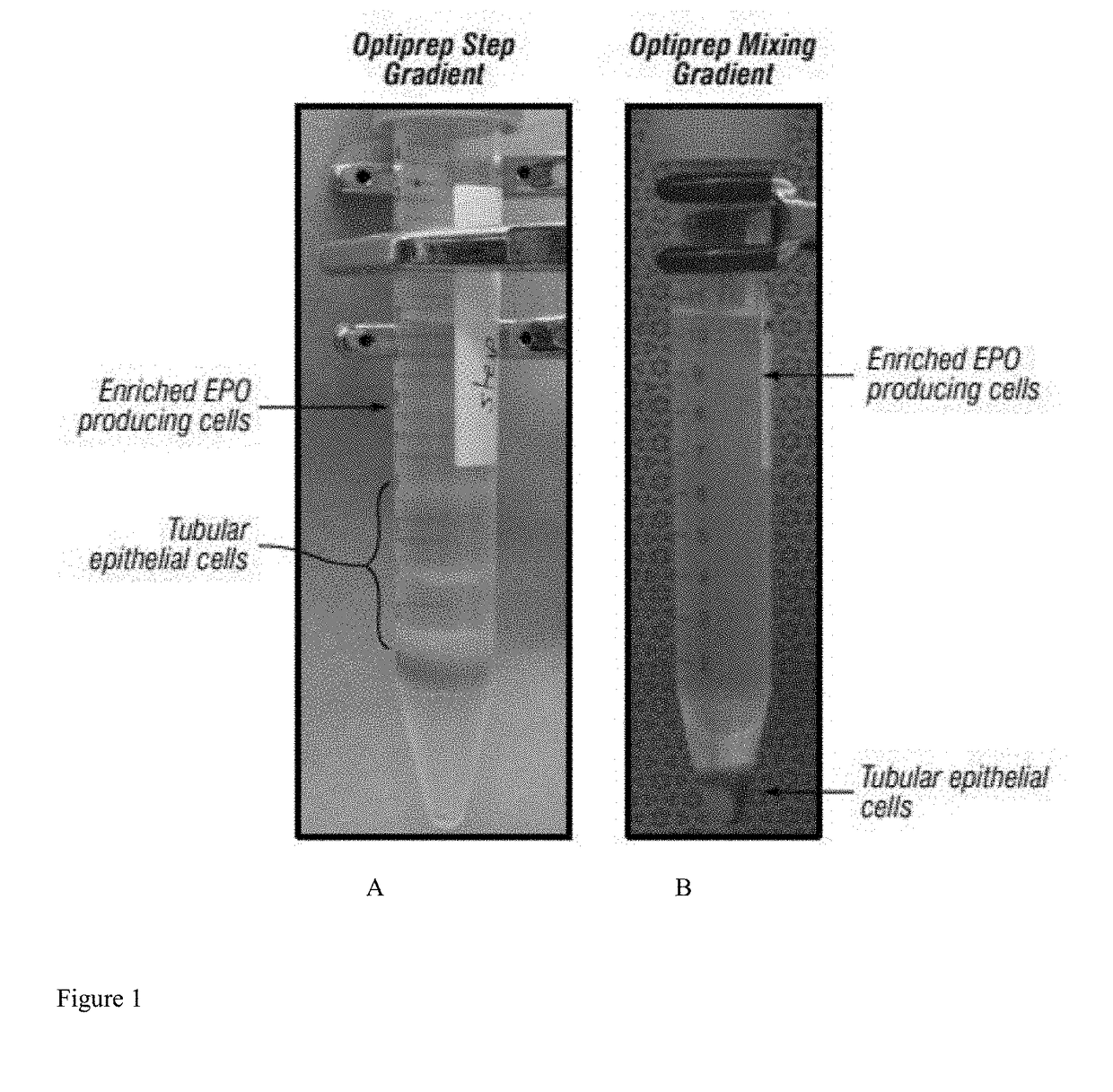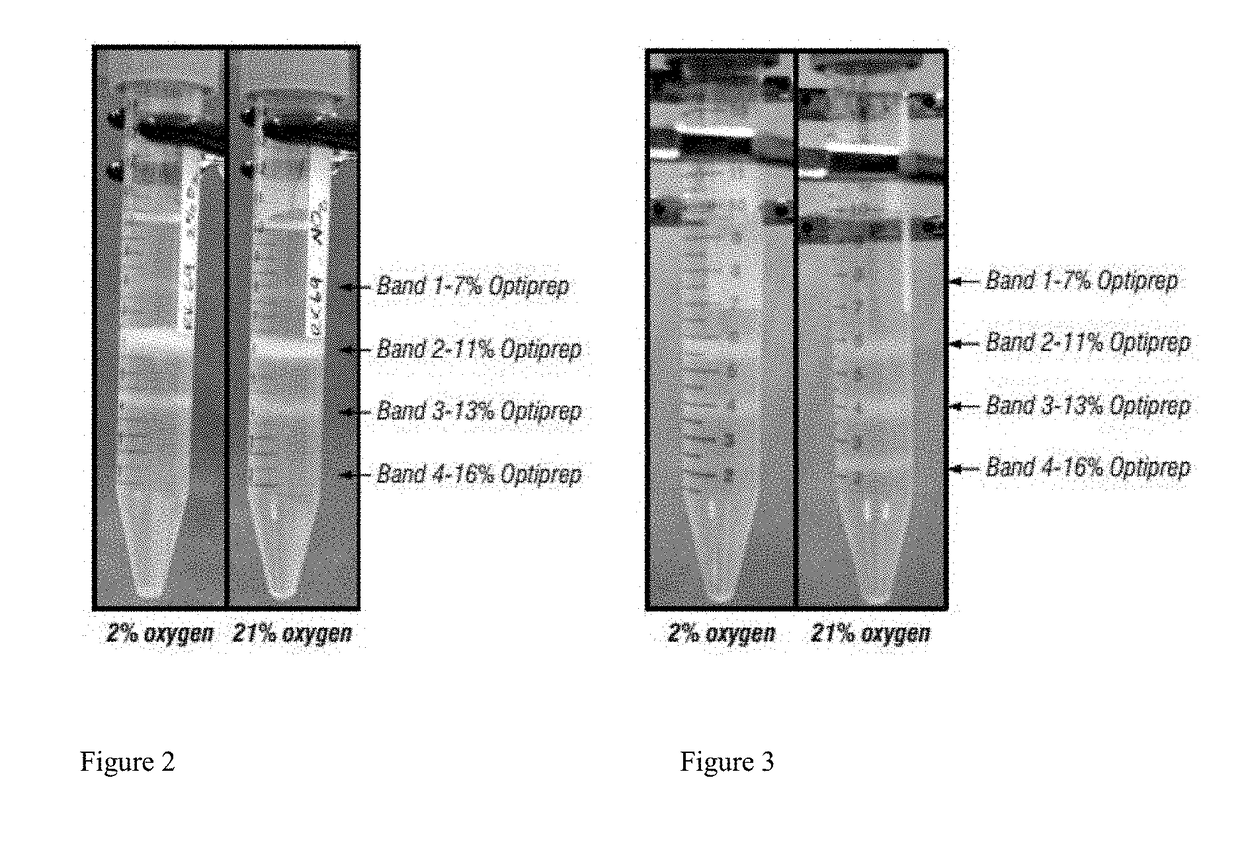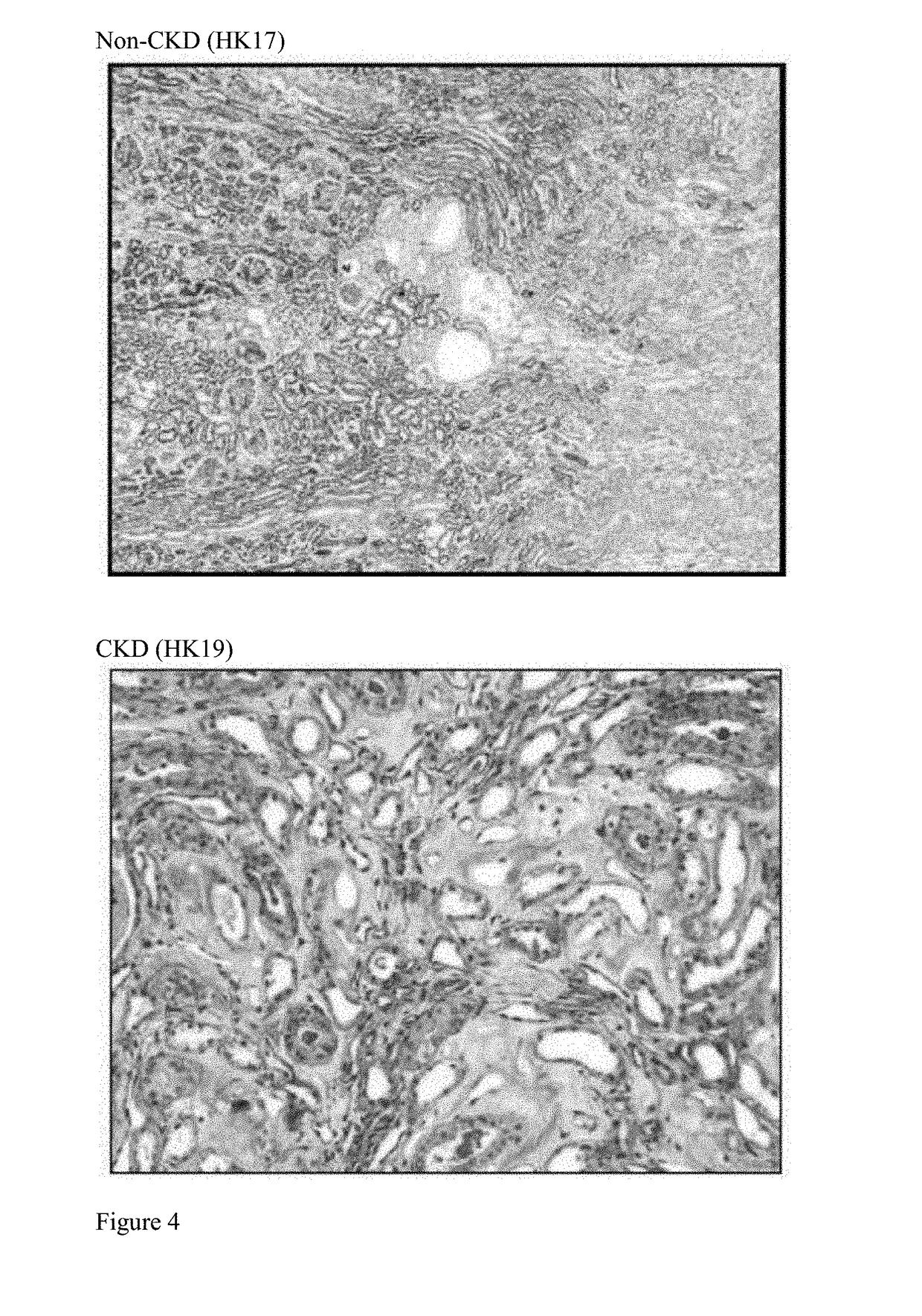Drug screening and potency assays
a drug and potency assay technology, applied in the field of screening test agents, can solve the problems of lack of effective pre-clinical models and assay systems, drug candidates in pre-clinical development fail to progress out of this stage, etc., and achieve the effect of reducing ggt expression
- Summary
- Abstract
- Description
- Claims
- Application Information
AI Technical Summary
Benefits of technology
Problems solved by technology
Method used
Image
Examples
example 1
Isolation & Characterization of Bioresponsive Renal Cells
[0223]A case of idiopathic progressive chronic kidney disease (CKD) with anemia in an adult male swine (Sus scrofa) provided fresh diseased kidney tissue for the assessment of cellular composition and characterization with direct comparison to age-matched normal swine kidney tissue. Histological examination of the kidney tissue at the time of harvest confirmed renal disease characterized by severe diffuse chronic interstitial fibrosis and crescentic glomerulonephritis with multifocal fibrosis. Clinical chemistry confirmed azotemia (elevation of blood urea nitrogen and serum creatinine), and mild anemia (mild reduction in hematocrit and depressed hemoglobin levels). Cells were isolated, expanded, and characterized from both diseased and normal kidney tissue. As shown in FIG. 1 of Presnell et al. WO / 2010 / 056328, a Gomori's Trichrome stain highlights the fibrosis (blue staining indicated by arrows) in the diseased kidney tissue c...
example 2
Isolation & Enrichment of Specific Bioreactive Renal Cells
[0225]Kidney cell isolation: Briefly, batches of 10, 2-week-old male Lewis rat kidneys were obtained from a commercial supplier (Hilltop Lab Animals Inc.) and shipped overnight in Viaspan preservation medium at a temperature around 4° C. All steps described herein were carried out in a biological safety cabinet (BSC) to preserve sterility. The kidneys were washed in Hank's balanced salt solution (HBSS) 3 times to rinse out the Viaspan preservation medium. After the third wash the remaining kidney capsules were removed as well as any remaining stromaltissue. The major calyx was also removed using micro dissection techniques. The kidneys were then finely minced into a slurry using a sterile scalpel. The slurry was then transferred into a 50 ml conical centrifuge tube and weighed. A small sample was collected for RNA and placed into an RNAse-free sterile 1.5 ml micro-centrifuge tube and snap frozen in liquid nitrogen. Once froze...
example 3
Low-Oxygen Culture Prior to Gradient Affects Band Distribution, Composition, and Gene Expression
[0237]To determine the effect of oxygen conditions on distribution and composition of prototypes B2 and B4, neokidney cell preparations from different species were exposed to different oxygen conditions prior to the gradient step. A rodent neo-kidney augmentation (NKA) cell preparation (RK069) was established using standard procedures for rat cell isolation and culture initiation, as described supra. All flasks were cultured for 2-3 days in 21% (atmospheric) oxygen conditions. Media was changed and half of the flasks were then relocated to an oxygen-controlled incubator set to 2% oxygen, while the remaining flasks were kept at the 21% oxygen conditions, for an additional 24 hours. Cells were then harvested from each set of conditions using standard enzymatic harvesting procedures described supra. Step gradients were prepared according to standard procedures and the “normoxic” (21% oxygen)...
PUM
| Property | Measurement | Unit |
|---|---|---|
| density | aaaaa | aaaaa |
| density | aaaaa | aaaaa |
| density | aaaaa | aaaaa |
Abstract
Description
Claims
Application Information
 Login to View More
Login to View More - R&D
- Intellectual Property
- Life Sciences
- Materials
- Tech Scout
- Unparalleled Data Quality
- Higher Quality Content
- 60% Fewer Hallucinations
Browse by: Latest US Patents, China's latest patents, Technical Efficacy Thesaurus, Application Domain, Technology Topic, Popular Technical Reports.
© 2025 PatSnap. All rights reserved.Legal|Privacy policy|Modern Slavery Act Transparency Statement|Sitemap|About US| Contact US: help@patsnap.com



